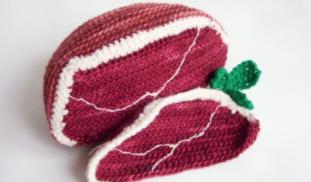169
0
0
Like?
Please wait...
About This Project
Meeting the meat demands of a growing population is increasingly difficult and is harmful to the environment, human health, and animal welfare. Cultured meat can provide a sustainable alternative. My project aims to produce plant protein fibers that can be incorporated into whole cut style cultured meat. Whole cut meat constitutes a large portion of the meat market, therefore technologies that enable whole-cut cultured meat formation are key for maximizing the impact of cultured meat.
More Lab Notes From This Project

Browse Other Projects on Experiment
Related Projects
Highly-sensitive, real-time enzyme methane oxidation rate measurements using an electrochemical assay
A low-cost, rapid, and highly sensitive assay is needed to measure methane gas oxidation rates by methane...
Engineering of a suction cup stethoscope for non-invasive monitoring of physiological sounds in baleen whales
Baleen whales are large-bodied predators that, despite their critical role in marine ecosystems, our understanding...
Building a better fish: Engineering fish for smarter aquaculture
What if we built a better fish instead of depleting wild fisheries? Natural stocks can’t keep up with demand...

